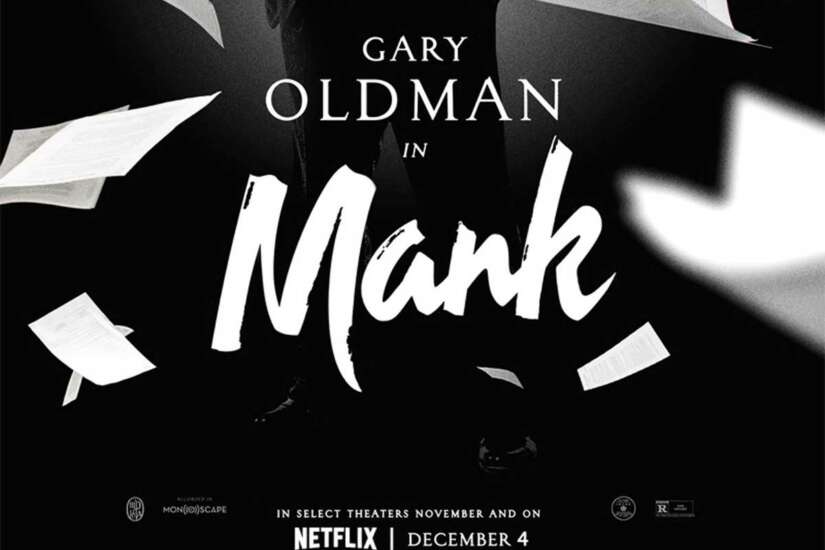‘MANK’ is about writer Herman Mankiewicz who started as a theatre critic for the New York Times then branched out into writing screenplays in the late 1920s and 1930s. He’s best known for “Citizen Kane”, for which he won the Oscar best screenplay with Orson Welles in 1942.
It’s the first film directed by Welles and it was nominated for several Oscars, but only won as best screenplay. Through the years, though, it won the top spot in polls of best films many times. Critic Pauline Kael wrote that it’s only Mankiewicz who wrote its script and Welles just added his name, but this is strongly contested. “Mank” now shows us what really happened in the process of the script being written.
It’s obvious that the germ of the story, which is about filthy rich newspaper magnate William Randolph Hearst, really came from Mank, who is the older brother of Joseph Mankiewicz, Oscar-winning writer director of “A Letter to 3 Wives” and “All About Eve”.
The film starts in 1940 when Welles (Tom Burke), only 24 years old that time but already a big success in Broadway and on radio, is given by RKO Pictures complete freedom to do a film project. He then gets Mank (Gary Oldman) to write it. Mank was then bedridden after he broke a leg in a car crash. He gets a secretary, Rita Alexander (Lily Collins), and dictates the script to her for typing.
The film is not told in a linear manner and Mank writes “Citizen Kane” that way, too. “Mank” jumps back and forth from the early 30s to 1940 and shows Mank’s friendship with actress, Marion Davies (Amanda Seyfried), who introduces him to her lover, the very influential Hearst (Charles Dance), who immediately likes Mank’s witty sense of humor and invites him to join them for dinner.
Hearst hosts a birthday party at his castle for MGM producer Louis B. Mayer (Arliss Howard) and the guests talk about the rise of Hitler and the Nazis in Germany and the next California election for governor. Mayer is against the radical candidate, Upton Sinclair. Marion leaves the party and Mank follows her in the garden where they discuss matters about politics and showbusiness.
Every now and then, the film returns to the present to see the progress of Mank’s work in writing “Citizen Kane”. Producer John Houseman is getting annoyed with Mank’s slow work. (Houseman will later be an actor in his old age and even won a best supporting actor Oscar for “The Paper Chase”.) He and Rita are also concerned about Mank’s alcoholism.
But Mank gets to finish the screenplay on time and Welles likes it very much, but reminds him that he will not be given screen credit for writing it. Both Marion and Hearst warn Mank and Welles not to continue with their film project, but Welles defies them. Mank then demands that he be given credit as his brother Joseph told him it’s the best thing he has ever written. Welles initially refuses, but relents and the film is released in 1941 to much acclaim.
“Mank” is directed by David Fincher, best known for thrillers like “Seven” and “Zodiac” and highly-acclaimed films like “The Social Network” (our personal fave) and “The Curious Case of Benjamin Button”. The script of “Mank” was written by his own father, Jack Fincher (who used to write for Life Magazine), and it has political overtones showing how Hearst and MGM conspired to bring down radical 1934 gubernational candidate Upton Sinclair by making duplicitous documentaries that maligned him, showing that fake news was already existing even then.
Oldman sizzles as Mank, convincingly delivering the ratatat dialogue with the required sardonic wit. He’s particularly impressive in that costume party scene where he rails against Hearst and tells the story of Don Quixote then pukes in front of all the guests.
Charles Dance as Hearst is also memorable in this scene where he just keeps quiet while Mank is haranguing him, then tells Mank the story of the organ grinder and the monkey to demonstrate who’s really more powerful between them. Also giving excellent support is Amanda Seyfried as Marion Davies, Tom Burke as Orson Welles and Arliss Howard as Louis B. Mayer.
The stylized digital black and white cinematography captures the feel of the era and its authentic production design immerses you in its atmosphere. But this film will surely cater more to cinephiles who love old Hollywood movies and care how they were made then.
Millennials today might not even know about “Citizen Kane”, but those who enjoyed “Sunset Boulevard”, “The Aviator”, “Gods and Monsters” and “L.A. Confidential” or TV series like “Feud” and “Fosse/Verdon” will certainly enjoy taking a look at this film which is about creative or artistic creation.

